An Illustrated Timeline of the Life of Gaetano Federici
| 1880 | Gaetano was born on September 22 in Castelgrande, Italy, a mountain village on the slopes of the southern Italian Apennines. He was the first child of Antonio and Theresa Federici. Sometime after his son’s birth, Antonio Federici immigrated to America in an effort to better support his family. |  Montebello castle, east of and connected to Castelgrande by the city walls. |
| 1887 | When he was seven years old, Gaetano and his mother emigrated to Paterson, New Jersey to join his father, Antonio, who had already established himself as a mason and builder. Paterson was a booming industrial town. The family settled on West Broadway and then moved as the family grew to Oxford Street. The parish they joined with other Italian families became St. Michael's on what was then Cross Street. From their home they could see the twin bell towers built to the specifications of the parish priest and fellow Castelgrandese, Father Carlo Cianci. Antonio Federici was a successful stone mason and contractor in Paterson and, seeing Gaetano's artistic promise as a Paterson High School student, he was able to afford to allow his son to get formal artistic training. |
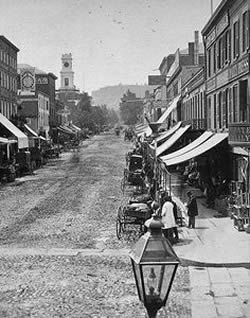 Downtown Paterson, late 1800s |
| 1889 | Gaetano began school at age nine, attending first School 14, followed by School 6 and finally Paterson High School. During these years Gaetano was known to his classmates as “Tom Fredericks,” a name developed by his father to mask the family’s immigrant origins. At first glance it appeared that Gaetano would follow in the footsteps of his father and pursue a career in architecture. (Illustration: Paterson promotional illustration, 1880 - click here for larger image) |
 |
1897 |
Encouraged by his parents, Gaetano left high school to apprentice in New York City under sculptor Giuseppe Moretti, a major bronzemaker. This was a time of large sculpture studios and an era of civic monument-making. The Beaux-Arts architectural design style encouraged such sculptures. In 1898, Federici donated a plaster bust to Paterson High School of Shylock, a character in Shakespeare's The Merchant of Venice. The bust was destroyed in the great fire of February 1902 that ravaged Paterson. |
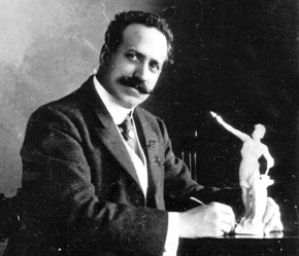 |
| 1900 - 1904 |
In 1900, he began apprenticeship with Charles Henry Niehaus. The following year he worked on pieces under the direction of Karl Bitter, and became an apprentice for the Henry Bonnard Foundry and the Roman Bronze Works as a bronze-caster in order to round out his skills. Gaetano learned his craft at the feet of these masters and in New York City at the National Academy of Design and the Art Students League. In 1903, Gaetano returned to Paterson to begin his career as a professional sculptor. In 1904, he traveled with his former teacher, Giuseppe Moretti, to mount the gigantic Vulcan statute for the 1904 St. Louis World's Fair. |
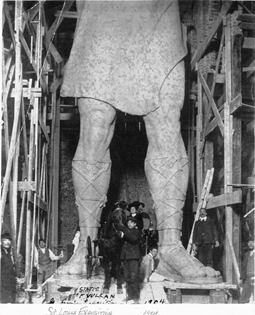 |
| 1905 | His first major Commission was the statue of Paterson's late Congressman John Stewart.
That statue remains in front of the Passaic County Courthouse. The Stewart unveiling put Federici on the front page of the Paterson News and launched his career in the city. |
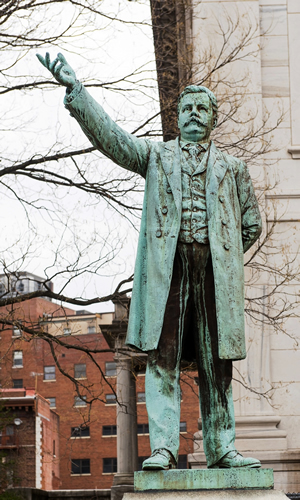 |
| 1908 |
|
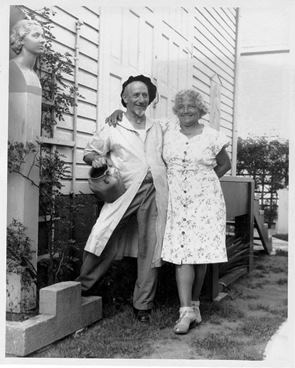 Gaetano and Orsola at their home on 8th Street in the late 1920s. |
| 1909 - 1914 |
Their first child, Antonio Canova, was born. (Photo: Antonio "Tony" visits the studio to see a bust of The Virgin.) The couple's second child, Teresa Maria, was born in 1914. |
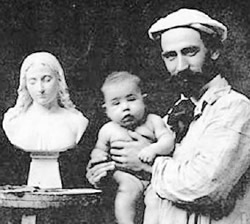 |
| 1924 | Unveiling of Federici’s tribute to Dean McNulty, founder of St. John’s Cathedral, beloved parish priest and the city's legendary Catholic force. This statue of McNulty sheltering a young boy became a local icon. | 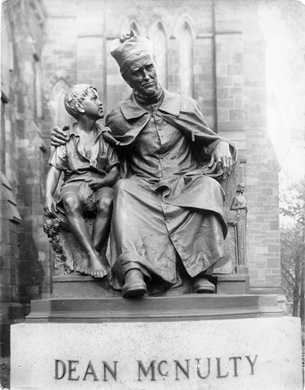 |
| 1925 | Mayor Nathan Barnert sculpture unveiled. This was Paterson's first bronze monument to a living celebrity and is located in City Hall Plaza. | 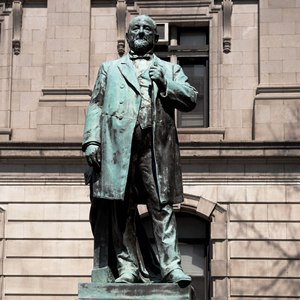 |
| 1926 | The Federici family moves from 148 Haledon Avenue to the house at 33 N. 8th Street that Gaetano designed and where the artist and his wife would spend the rest of their lives. (Photo: The 8th Street home as it appears today.) |
 |
| 1927 | Bronze monument of Labor-Senator William “Billy” Hughes. | 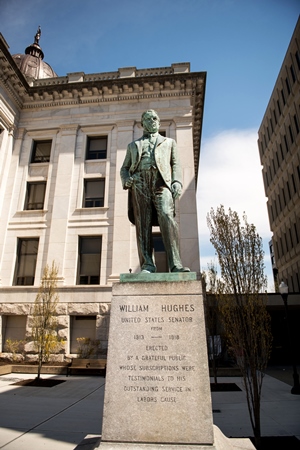 |
| 1928 | His work included statues, plaques and lunette carvings. An example of a lunette carving is his depiction of St. Michael Overpowering Lucifer over the doors of St. Michael’s Church. | 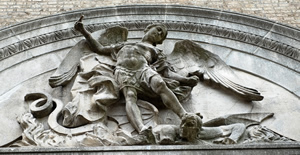 |
| 1930 | Sculpts the World War I Memorial, which the Paterson News described as “two doughboys in the heart of attack.” | 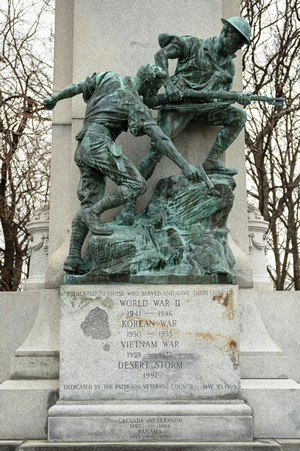 |
| 1931 | Dublin Spring Water-Boy monument. | 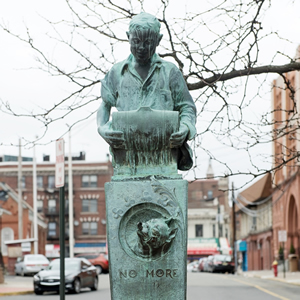 |
| 1936 | The Spirit of the Resurrection, a monument at the entrance to Laurel Grove Memorial Park in Totowa. The monument was originally paired with a fountain. | 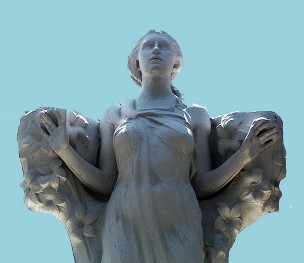 |
| 1938 | Tribute to Arcangelo Corelli | 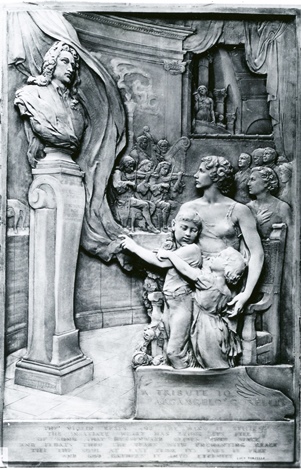 |
| 1942 | Paterson-born and raised, Lou Costello, of the film and TV comedy team of Abbott and Costello, visits the studio to see the progress on a bust being made of him by Federici. | 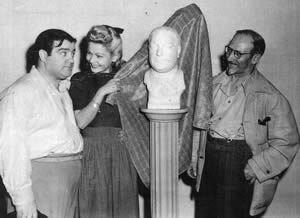 |
| 1947 | Monument to Dr. Andrew McBride. | 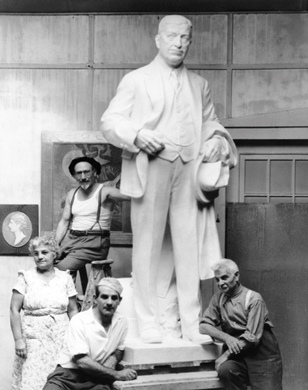 |
| 1953 | Memorial sculpture of Christopher Columbus. (Plaster model from the Studio Collection) | 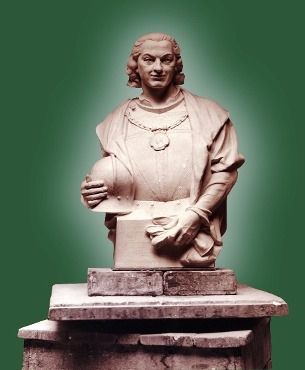 |
| 1957 | After surviving a heart attack, Federici completed his last major commission, Bishop Thomas McLaughlin. Paterson’s first Catholic Bishop, McLaughlin, was unveiled on the grounds of St. John’s Cathedral. Gaetano Federici completed no less that 40 commissioned public monuments within a two-mile radius of Paterson's City Hall. Fifteen of them are within a radius of two or three blocks. See our walking tour page for more information. |
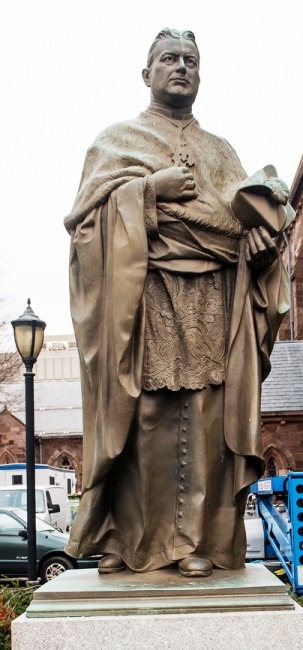 |
| 1964 | Gaetano was taken to St. Joseph’s Hospital with a heart seizure in 1959. He died on February 15, 1964, at the age of 84. He is buried with other members of his family in Holy Sepulcher Cemetery, Totowa, under a sculpture of his own creation. His wife died two years later. Federici became known as Paterson's unofficial "sculptor laureate," and is one of New Jersey's few native sculptors. The Encyclopedia of American Biography in 1966 called Federici "an outstanding American sculptor . . . who won international acclaim for his work." Federici's sculptures also are found in Cuba, New York, Hollywood, and in churches and cemeteries throughout the Paterson region. |
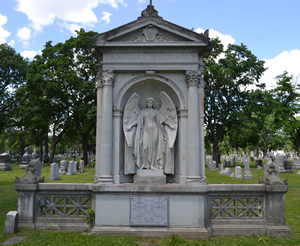 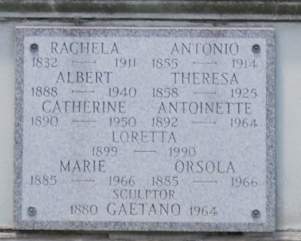 |
| 2014 | The City of Paterson Historic Preservation Commission which protects, promotes, and preserves the City’s historic environment, adopted on May 27, 2014, the city’s master plan, giving Federici’s public statues and monuments “significant status,” paving the way for local designation and future planning. | |
SOURCES
patersonhistory.com
lambertcastle.org
Gaetano Federici (1880-1964): The Artist as Historian, Catalogue from the exhibition held at the Lambert Castle Museum, 1980, edited by Flavia Alaya.
Historic Passaic County: An Illustrated History by Edward A. Smyk, Robert J. Masiello.
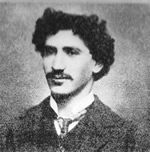 At age 28, Gaetano marries Orsola Alois.
At age 28, Gaetano marries Orsola Alois.